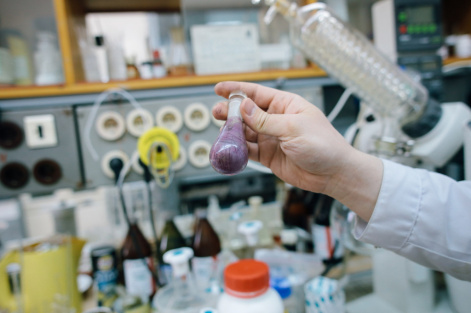Days without turnstiles: an excursion to the Laboratory of the Krasnoyarsk Science Center
20 November 2019 г. FRC KSC SB RAS

Within the framework of the annual campaign “Days without turnstiles” organized by the Russian Science Foundation and All-Russian Festival "Science 0+", the Krasnoyarsk Science Center SB RAS invites everyone to excursions to its laboratories.
Visitors will have an opportunity to look at the unique equipment, to get acquainted with promising projects of Krasnoyarsk scientists who received federal financial support, to observe scientists in their natural working environment, to communicate with them in an informal manner and to ask all their questions.
Date and time: November 27, 10:00-14:00
Address: Akademgorodok 50. Krasnoyarsk Science Center of SB RAS
Laboratory of Photonics of Molecular Systems (L.V. Kirensky Institute of Physics)
The laboratory deals with developing new photonic structures. Such elements possess predetermined spatial and spectral characteristics and can be used both in the optical (light) and telecommunication (radio waves) ranges. Krasnoyarsk physicists use new molecular systems with extreme optical characteristics: anisotropy, nonlinearity, and resonance properties. Such photonic structures can be used to develop new fiber-optic cables required for modern telecommunication equipment as well as for various optoelectronic sensors and devices.
What visitors of the laboratory will see:
Vacuum magnetron sputtering installation and excimer laser, which are used to create new nanostructures based on semiconducting and dielectric oxide layers as well as metal coatings. This installation was specially created for the laboratory by the employees of the L.V. Kirensky Institute of Physics SB RAS and new nodes are added to this system in accordance with advanced research tasks.
Laboratory of Molecular Spectroscopy and Analysis (Institute of Chemistry and Chemical Technology)
The laboratory creates a set of programs and techniques for studying the structure and character of chemical bonds, reactivity and reaction mechanisms of new compounds and materials. In the group of organometallic synthesis, methods for the selective formation of carbon-carbon, carbon-metal, and carbon-element bonds are being studied. The results obtained are the fundamental basis for the development of methods for synthesizing complex compounds of a given composition and structure. Such substances can be used as reagents or catalysts in various processes of synthesis of organic substances, and as precursors for creating more complex materials used, for example, in optics and electronics.
What visitors of the laboratory will see:
The work of the group studying the synthesis of organometallic and coordination compounds. and a vacuum gas collector which allows performing reactions and obtaining substances sensitive to oxygen and water from atmospheric air. The process of eliminating traces of water from organic solvents, the complexes synthesized in the laboratory, and their crystals, as well as devices for studying physicochemical properties of substances.
Laboratory of Phototrophic Biosynthesis Management (Institute of Biophysics)
The laboratory is engaged in the development of human life support systems (LSS). LSS is necessary to meet the human needs for food, clean water and air in autonomous mode. Such systems was originally supposed to be a prototype of the lunar or Martian stations. However, these technologies now have earth applications. LSS elements can be used to create waste-free production, autonomous greenhouses, and waste treatment. However, there remains the space direction of research - sooner or later, people will fly into faraway space, where they will need similar technologies.
What the visitors of the laboratory will see:
The elements of LSS: closed phytotrons - autonomous units in which scientists grow plants simulating the presence of humans; a unique system for recycling liquid and solid organic wastes, including human wastes. The legendary BIOS-3 is a closed ecosystem in which the world's first successful experiments with human participation on the creation of a lunar station were held in the 70-80s of the last century
Registration:
https://krasnoyarsk-science.timepad.ru/event/1123268/
Contacts:
Head of the scientific communications group of the Krasnoyarsk science Center SB RAS Yegor Zadereev, +7 3912 43 89 32, egor@ibp.ru
The group specialist — Ekaterina Burchevskaya, +7 983 144 41 15, burchevskaya@ksc.krasn.ru
Share:
